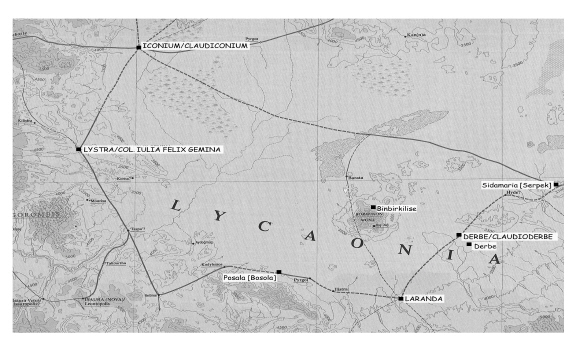Why Derbe? An Unlikely Lycaonian City For Paul’s Ministry -- By: Bob Wagner
Journal: Tyndale Bulletin
Volume: TYNBUL 70:1 (NA 2019)
Article: Why Derbe? An Unlikely Lycaonian City For Paul’s Ministry
Author: Bob Wagner
TynBull 70:1 (2019) p. 55
Why Derbe?
An Unlikely Lycaonian City For Paul’s Ministry
and
Mark Wilson
([email protected] / [email protected])
Summary
This article discusses Paul’s visit to Derbe contextually within the first journey as well as his subsequent visits to this minor Lycaonian city. It reviews the difficulty of earlier travellers and scholars such as Davis, Sterrett, and Ramsay to localise the site. The discovery of two inscriptions naming Derbe have more precisely situated the site, yet some ambiguity remains. Paul’s projected routes between Lystra and Derbe as presented in maps and atlases are reviewed. The authors’ autopsy of this area provides fresh insights into Paul’s route between the two cities. The article closes with a suggested reason why Paul visited Derbe on his first journey and thereby founded a community of believers there.
1. Historical Background
Derbe was an unlikely city to be evangelised by Paul, for it was a minor settlement on a spur of the Southern Highway and apparently without a Jewish community. Derbe begins to feature in Greco-Roman history in the first century BC through the writings of various Greek and Latin authors. Located in southern Lycaonia (Fig. 1), the region was attached to the Attalid kingdom after the Treaty of Apamea (188 BC), then to the province of Asia after its founding in 129 BC, and finally to the province of Cilicia in the mid-first century BC.1 Whether the territory of Isauria included Derbe has been debated. Derbe was the
TynBull 70:1 (2019) p. 56
easternmost settlement of Isaurike, a district of Lycaonia (Strabo 12:6:2–3).

Fig. 1. Region of Lycaonia2
In September 51 BC Cicero set out for Cilicia, passing through Iconium and Cybistra.3 Syme notes that the shortest route through Barata is ‘deficit in water and unsuitable for an army’, thus surmises that Cicero would instead have taken the longer road by way of Lystra, Derbe, and Laranda.4 According to Syme, the description of Cicero (Ad Fam 15:2) about his return confirms this route: ‘I thought that I ought to direct my march through Lycaonia, the Isaurians, and Cappadocia.’ While in Derbe, Cicero (Ad Fam 13:73) was probably hosted by a local dynast named Antipater Derbetes who ruled not only his own city but also Laranda (Strabo...
Click here to subscribe
